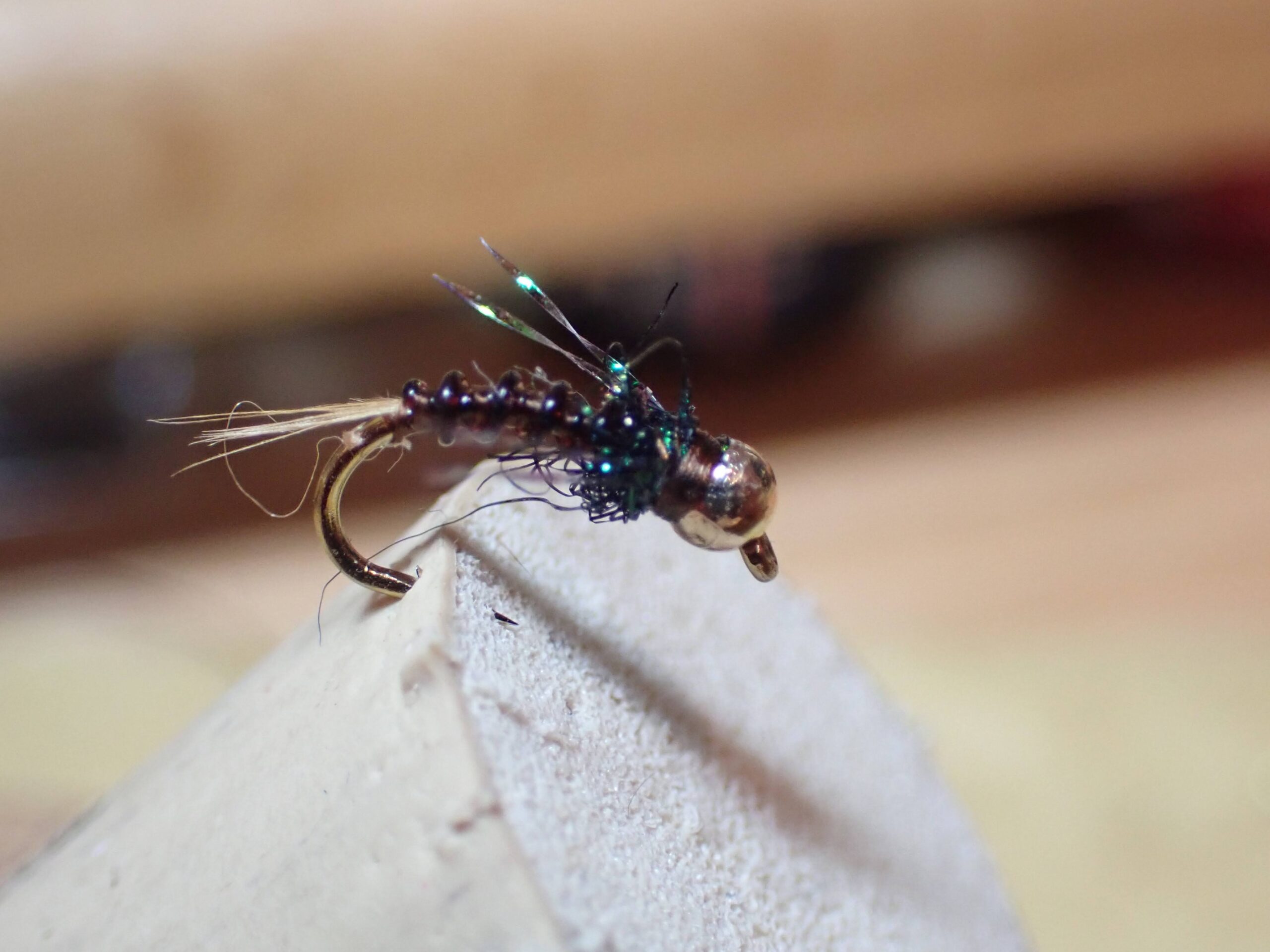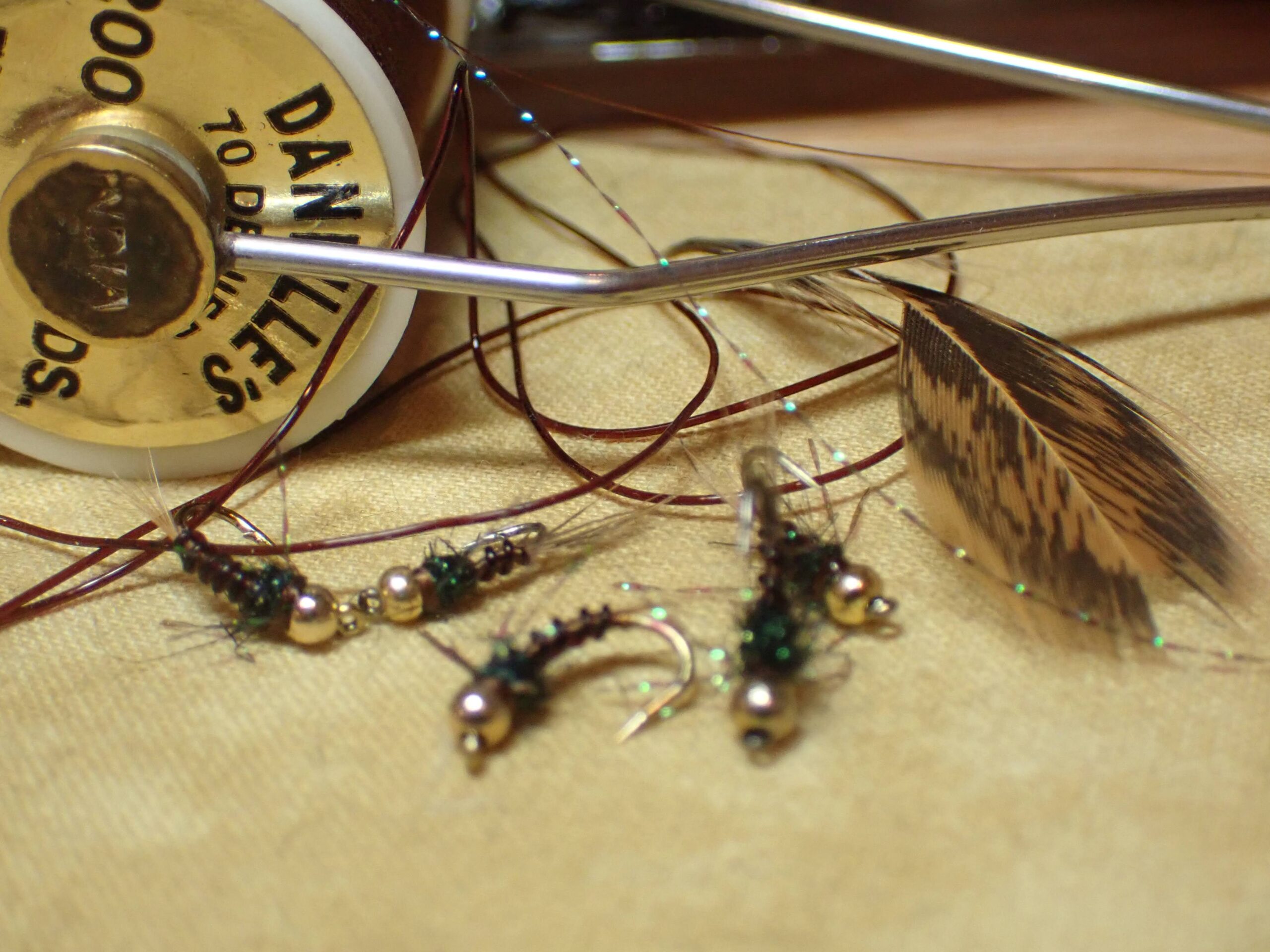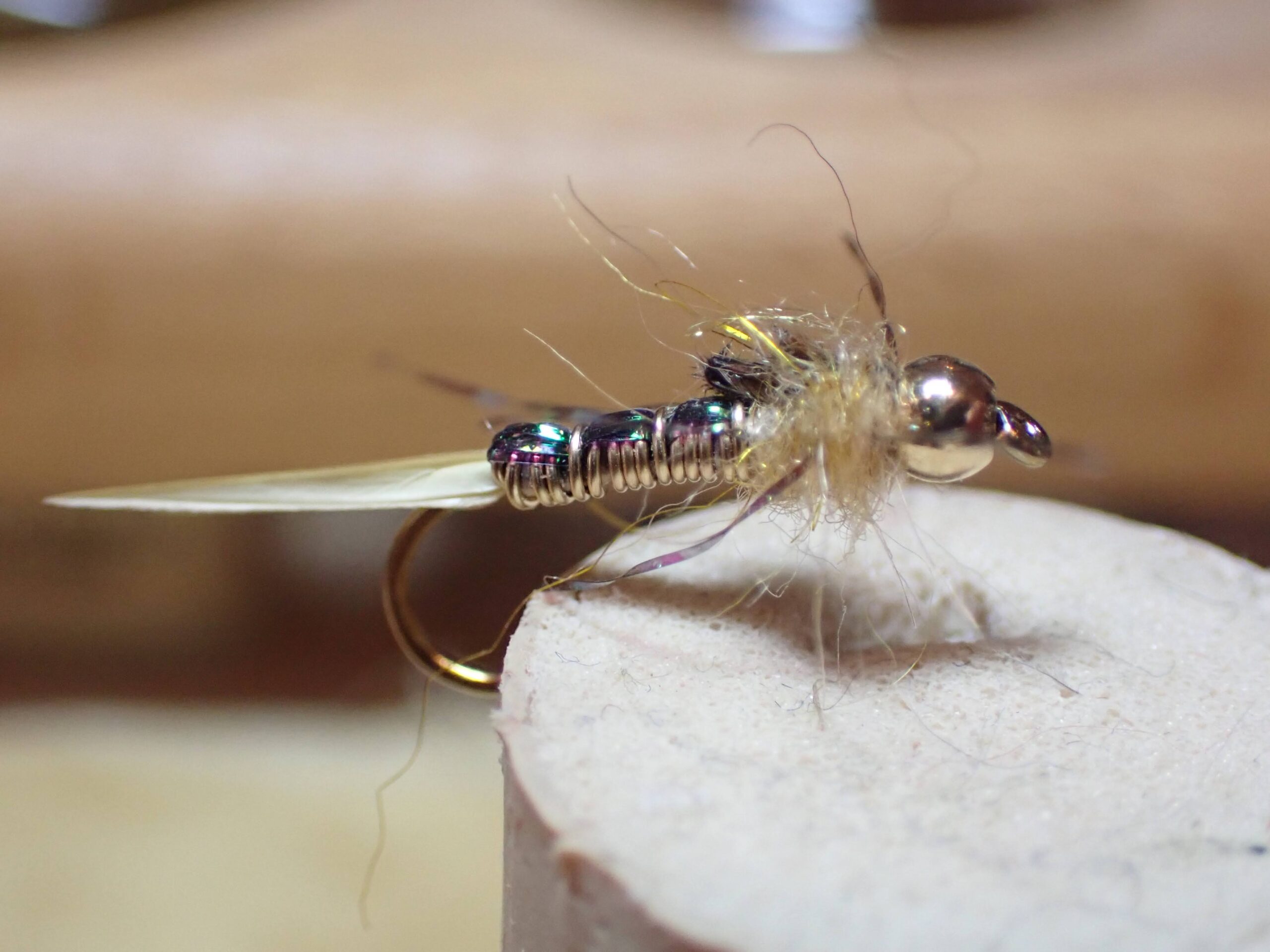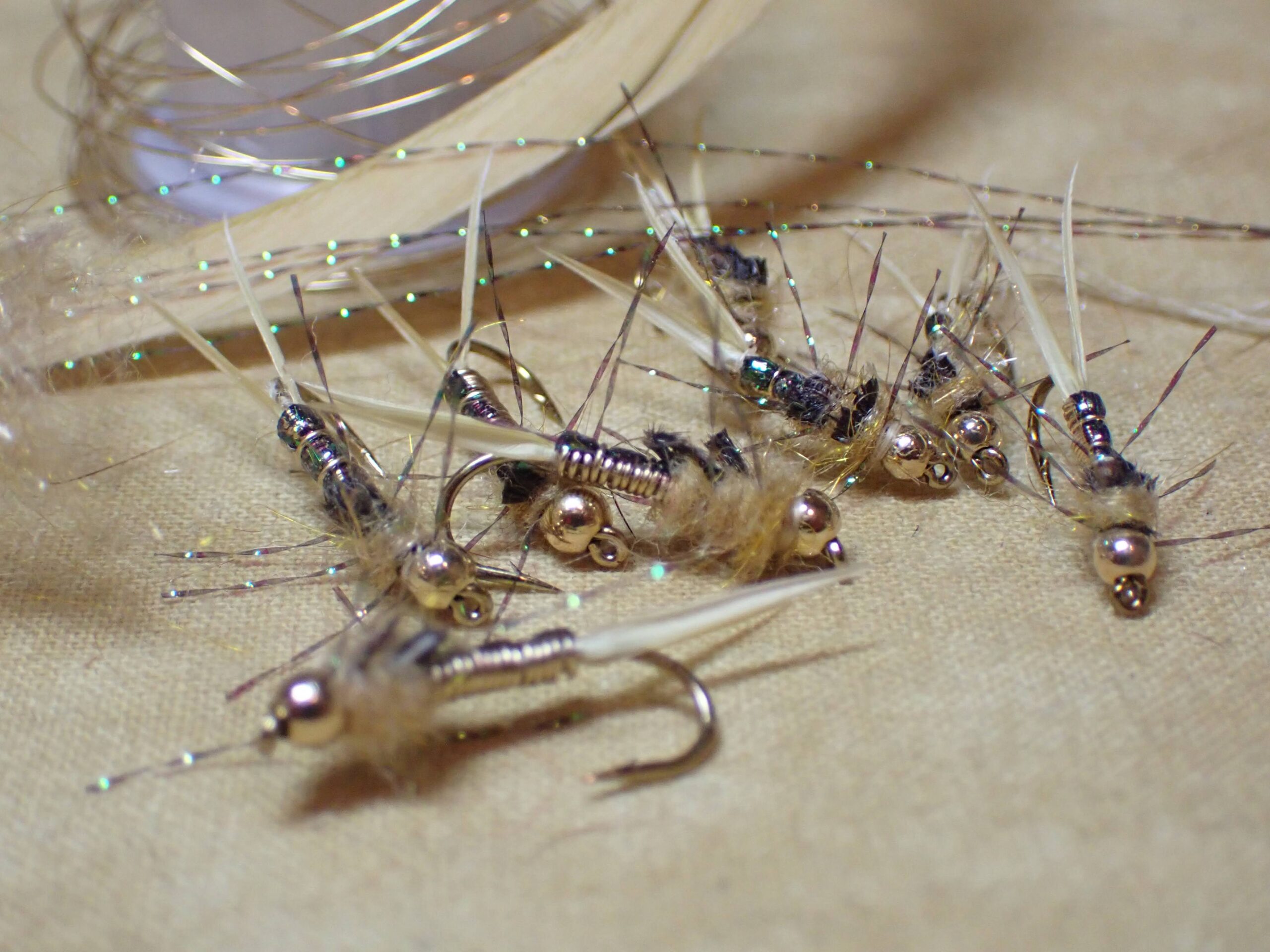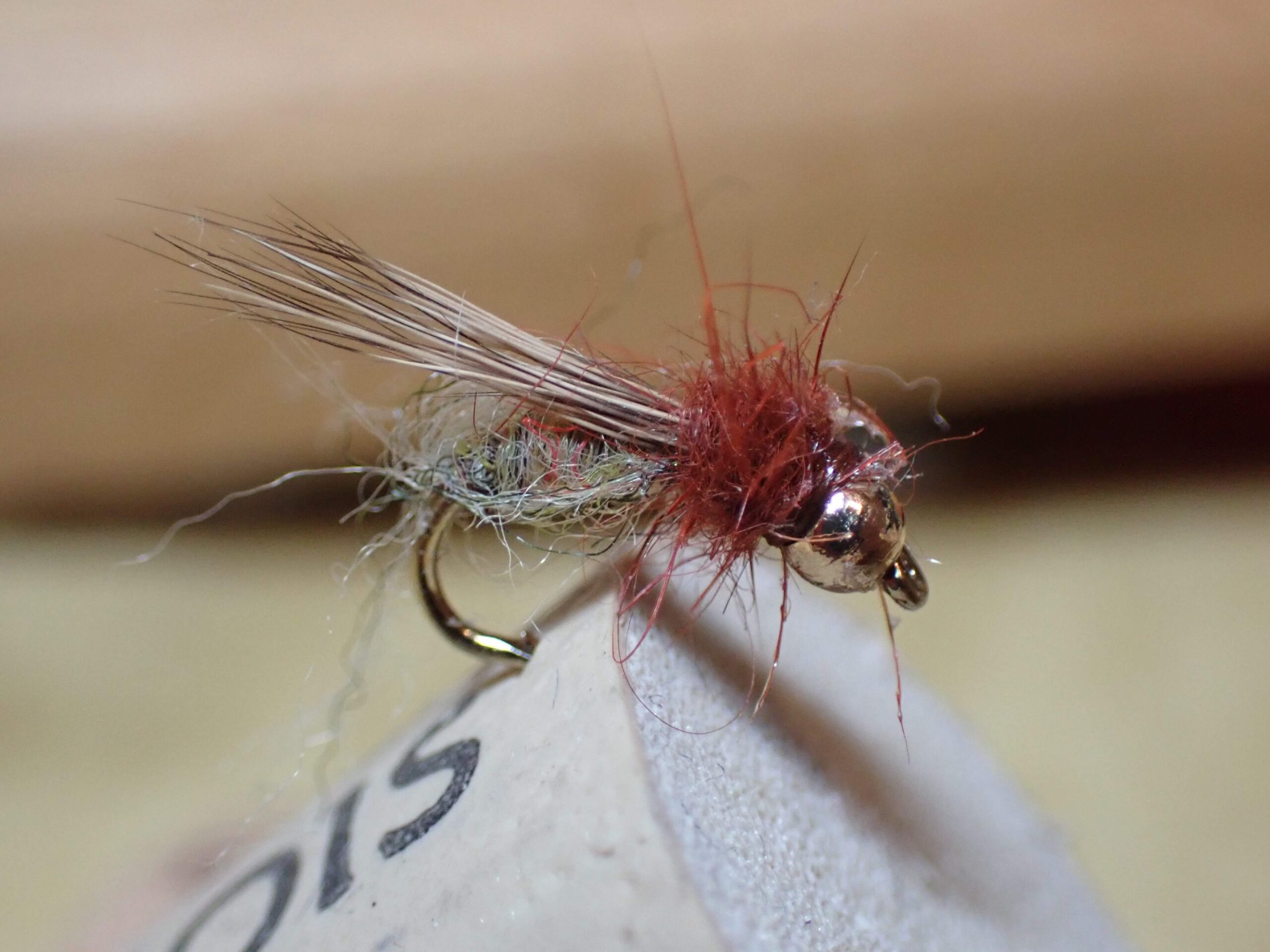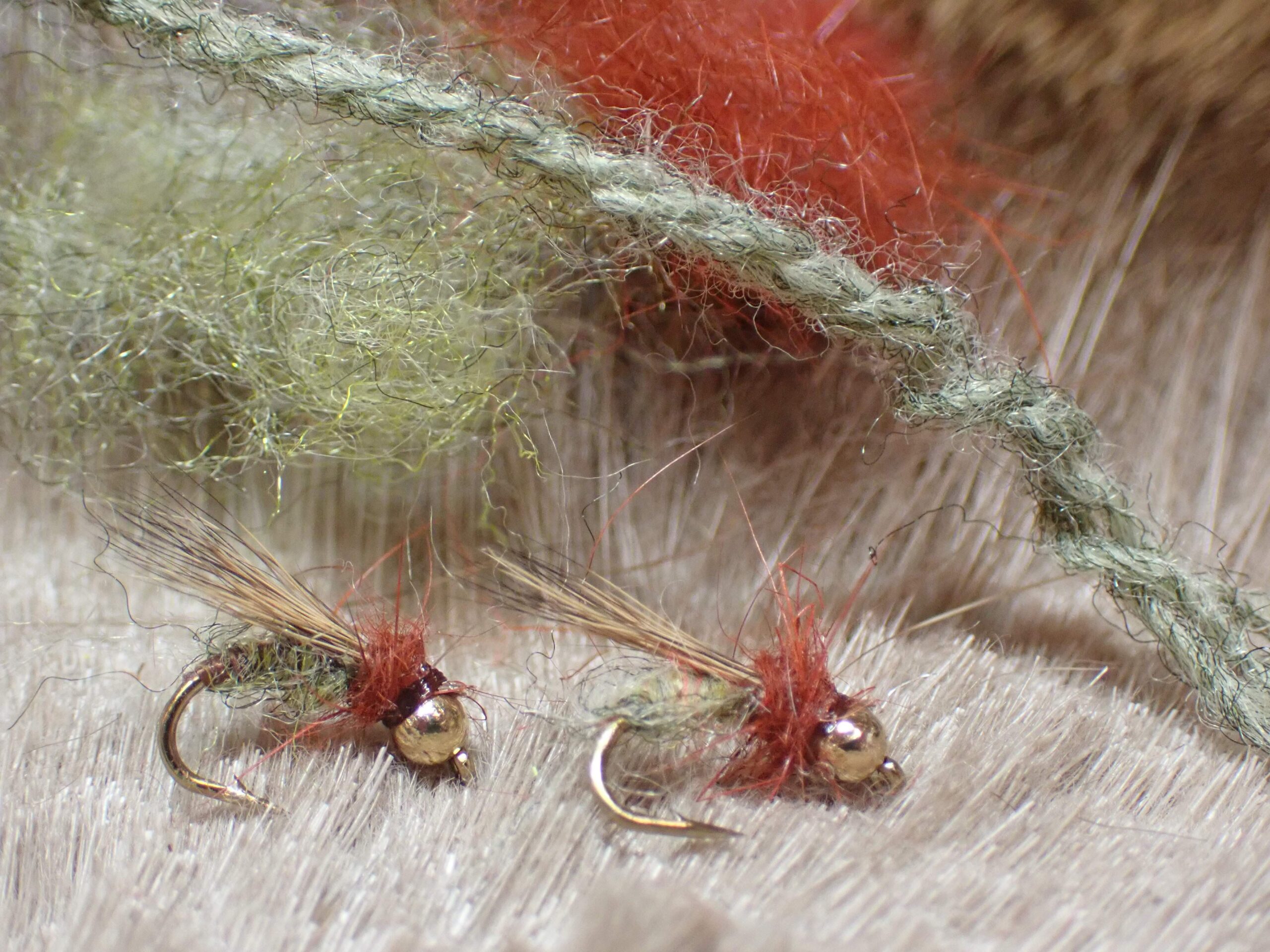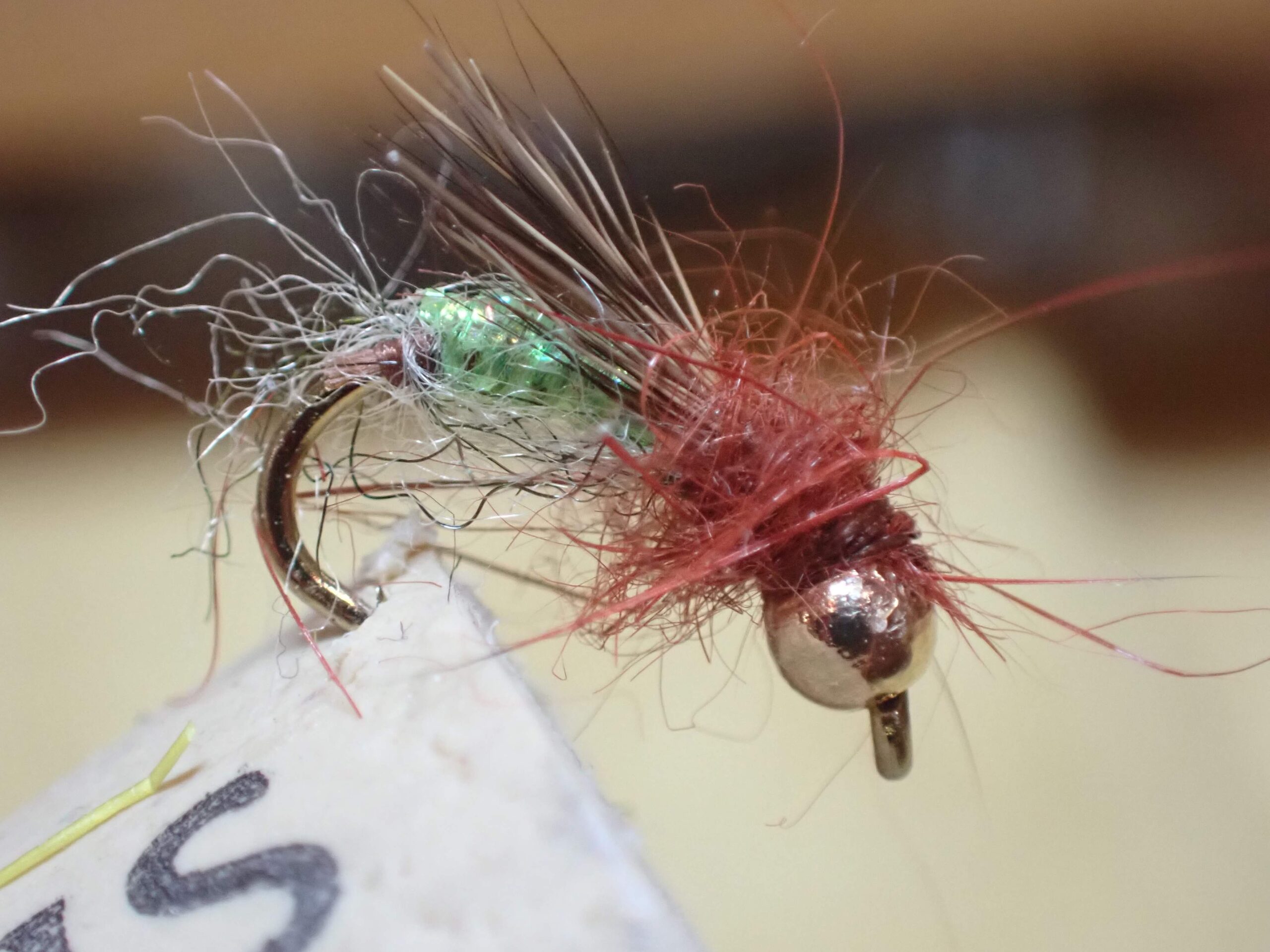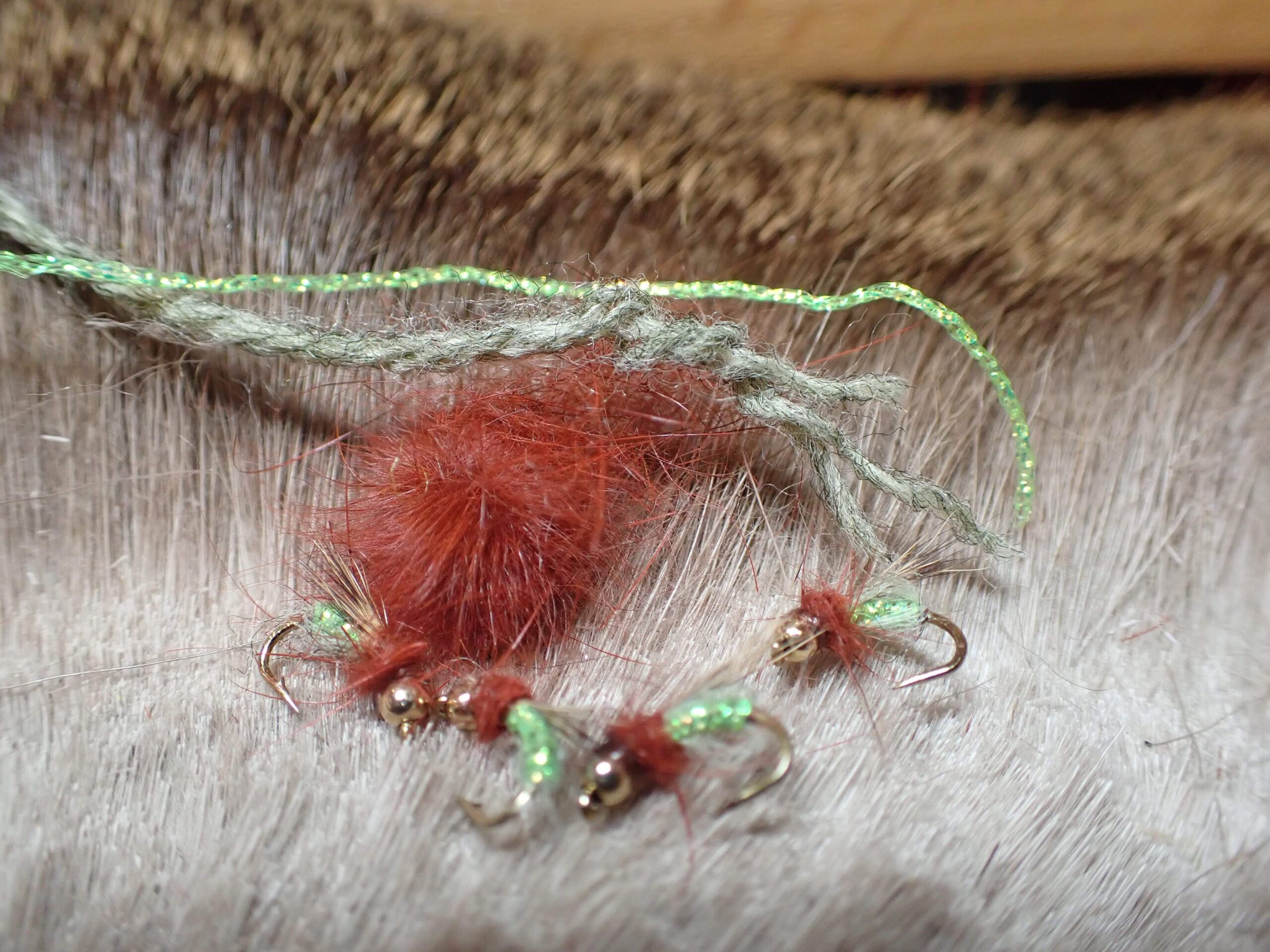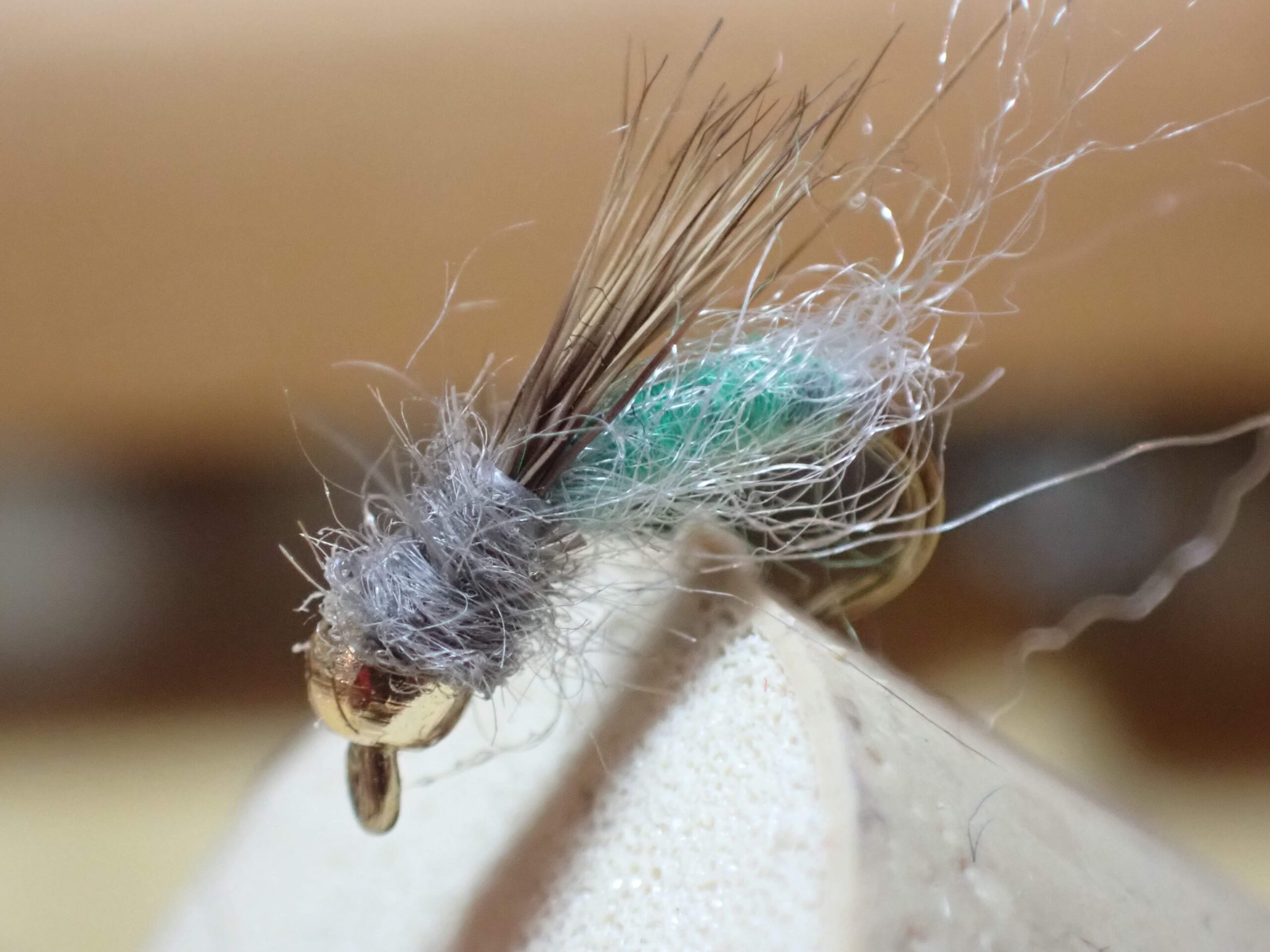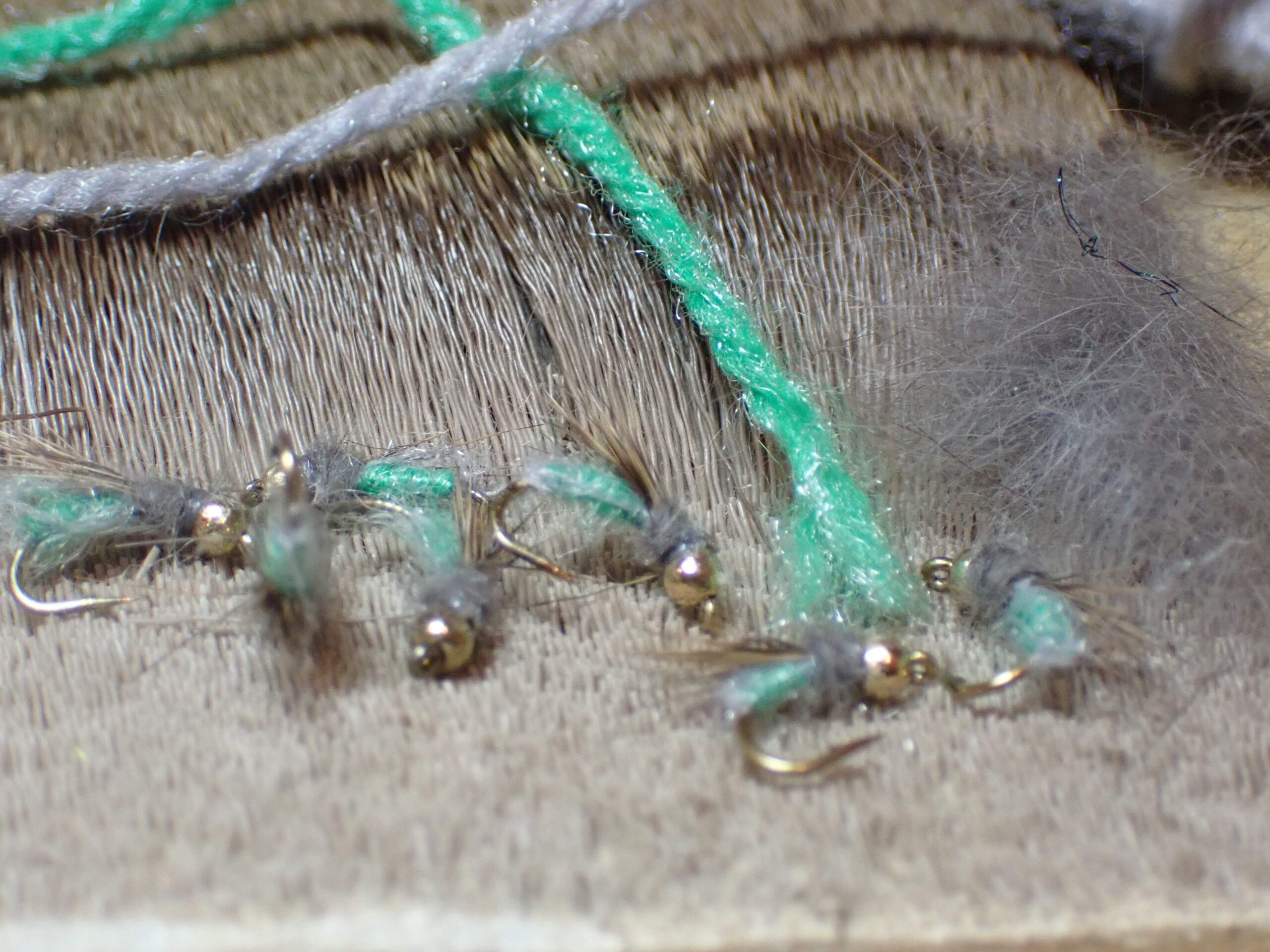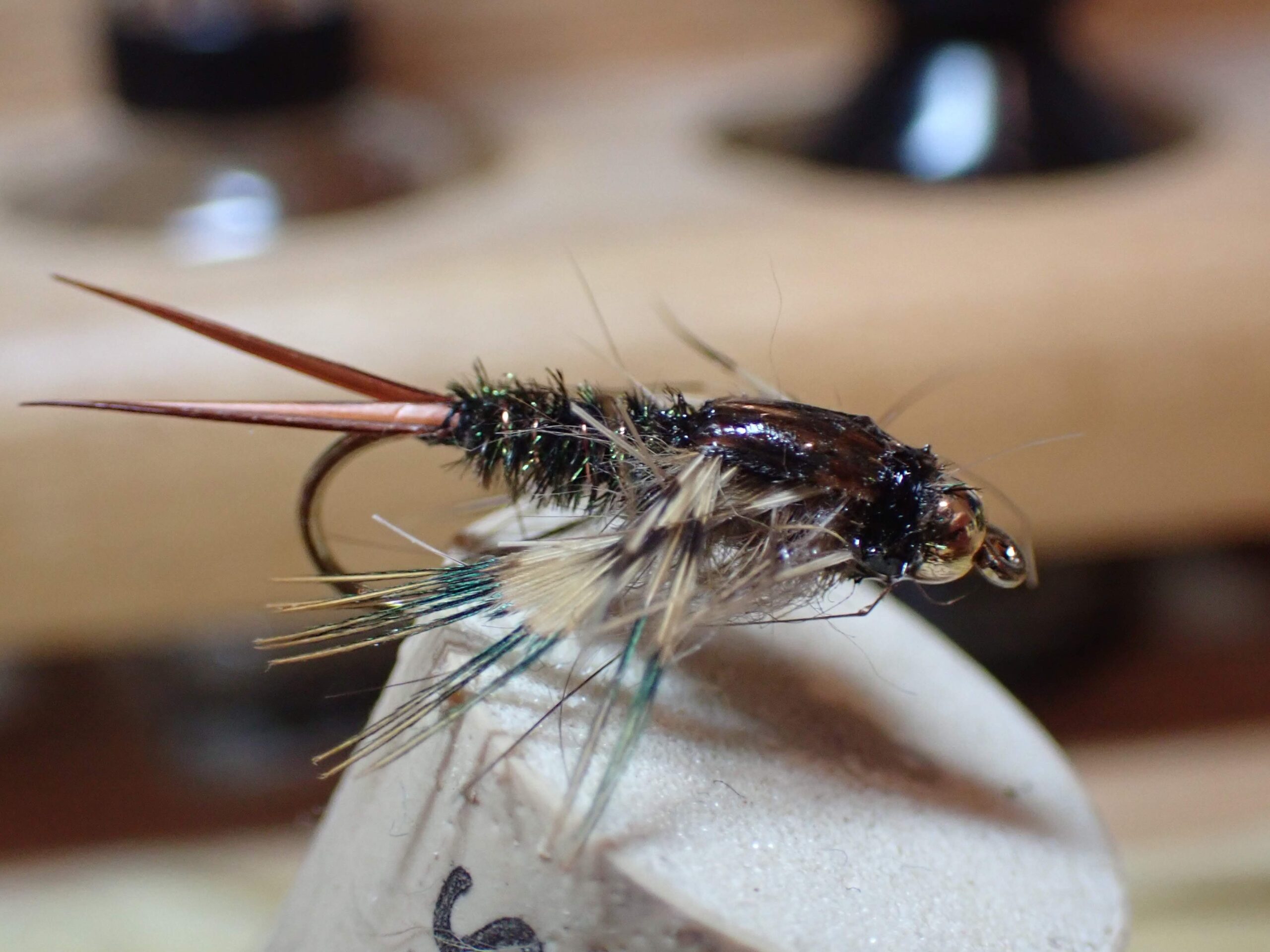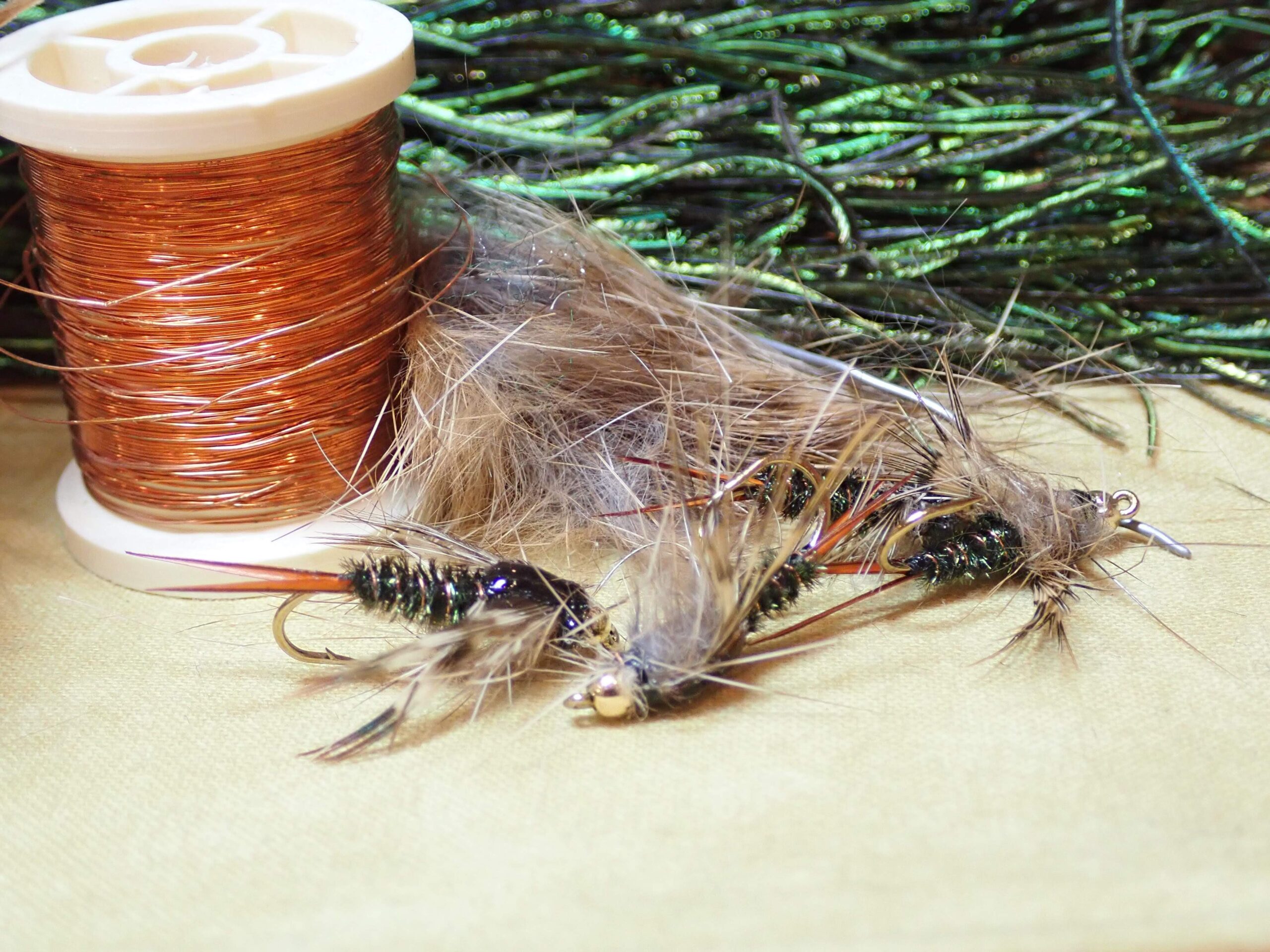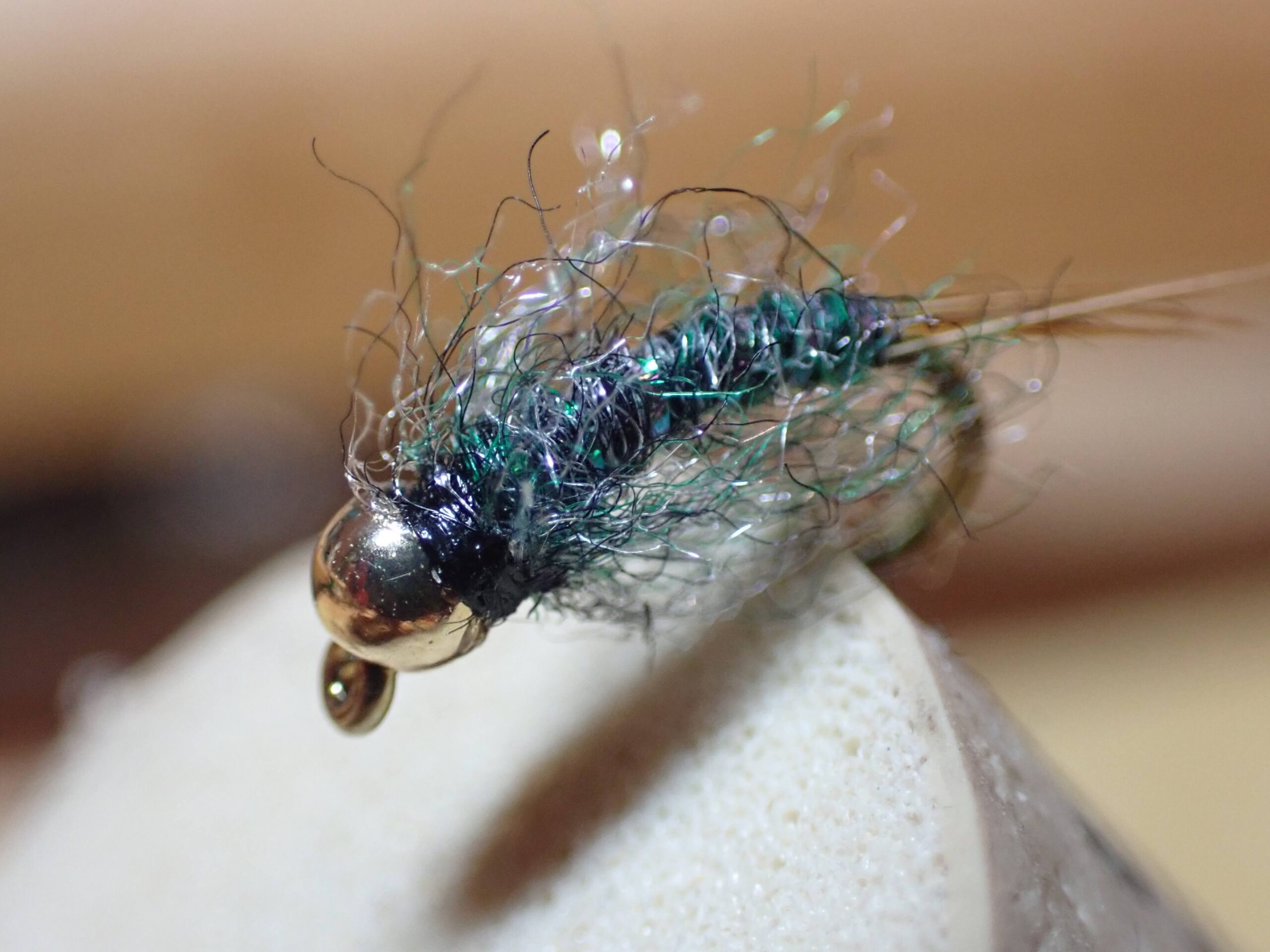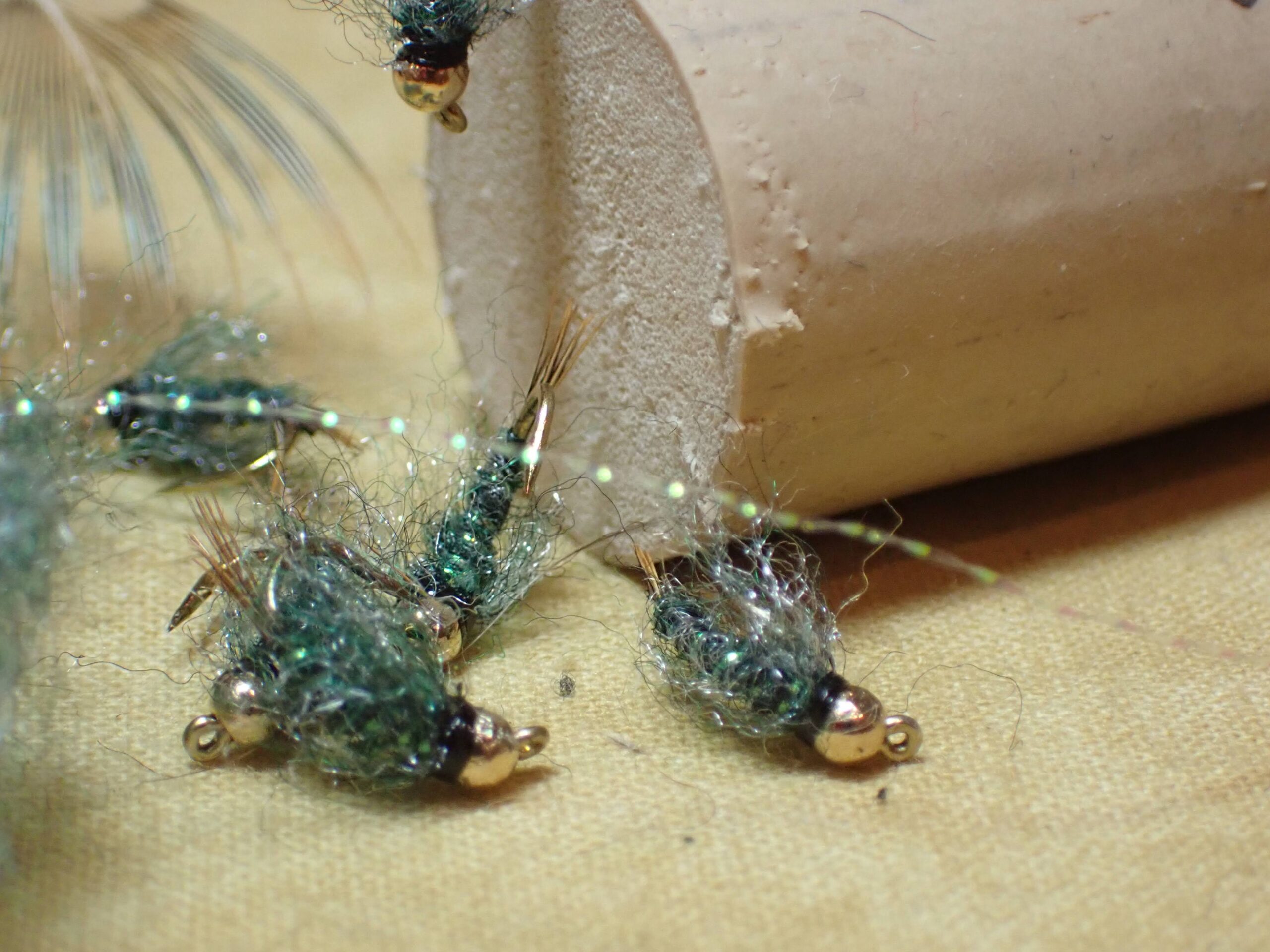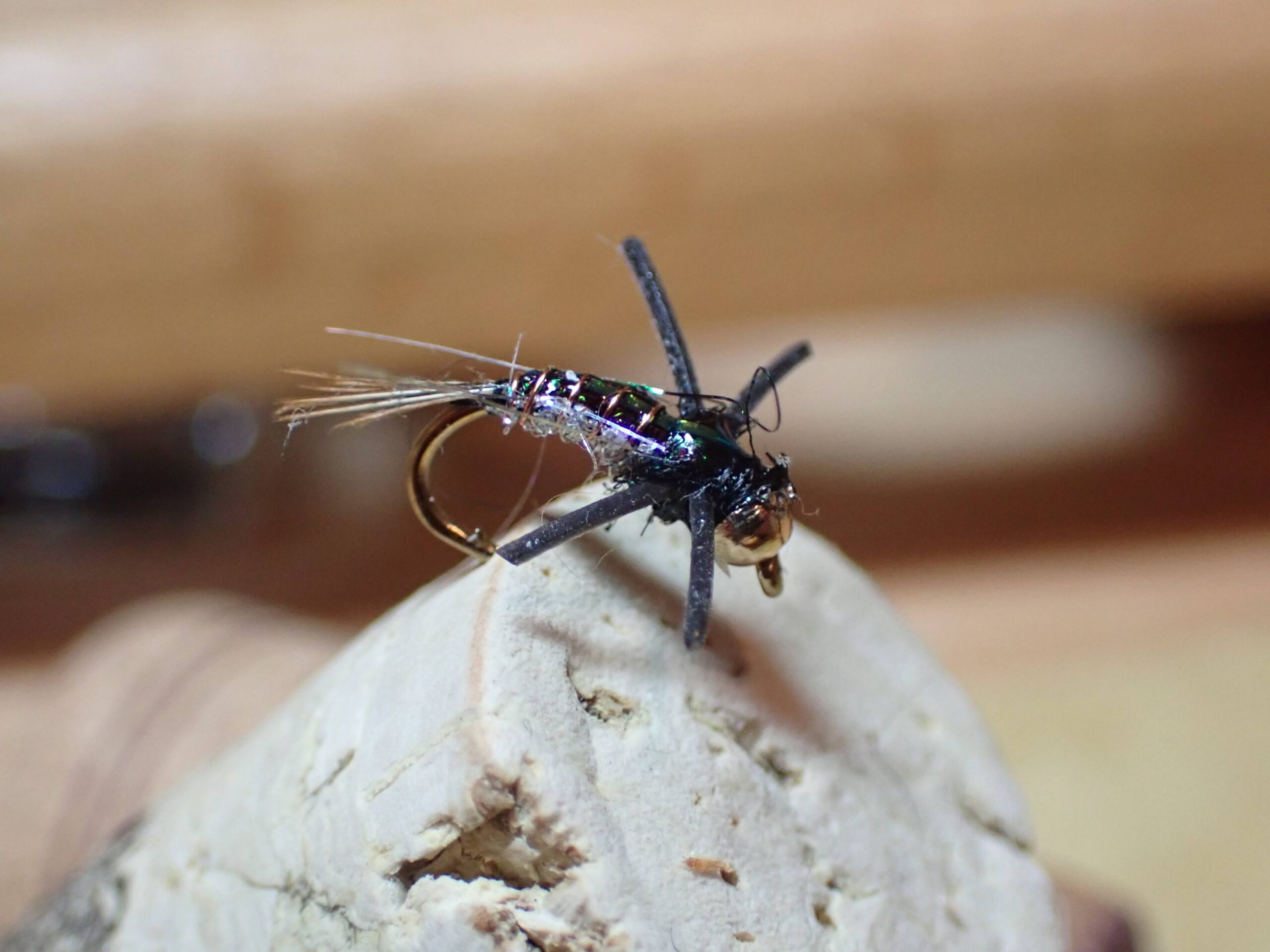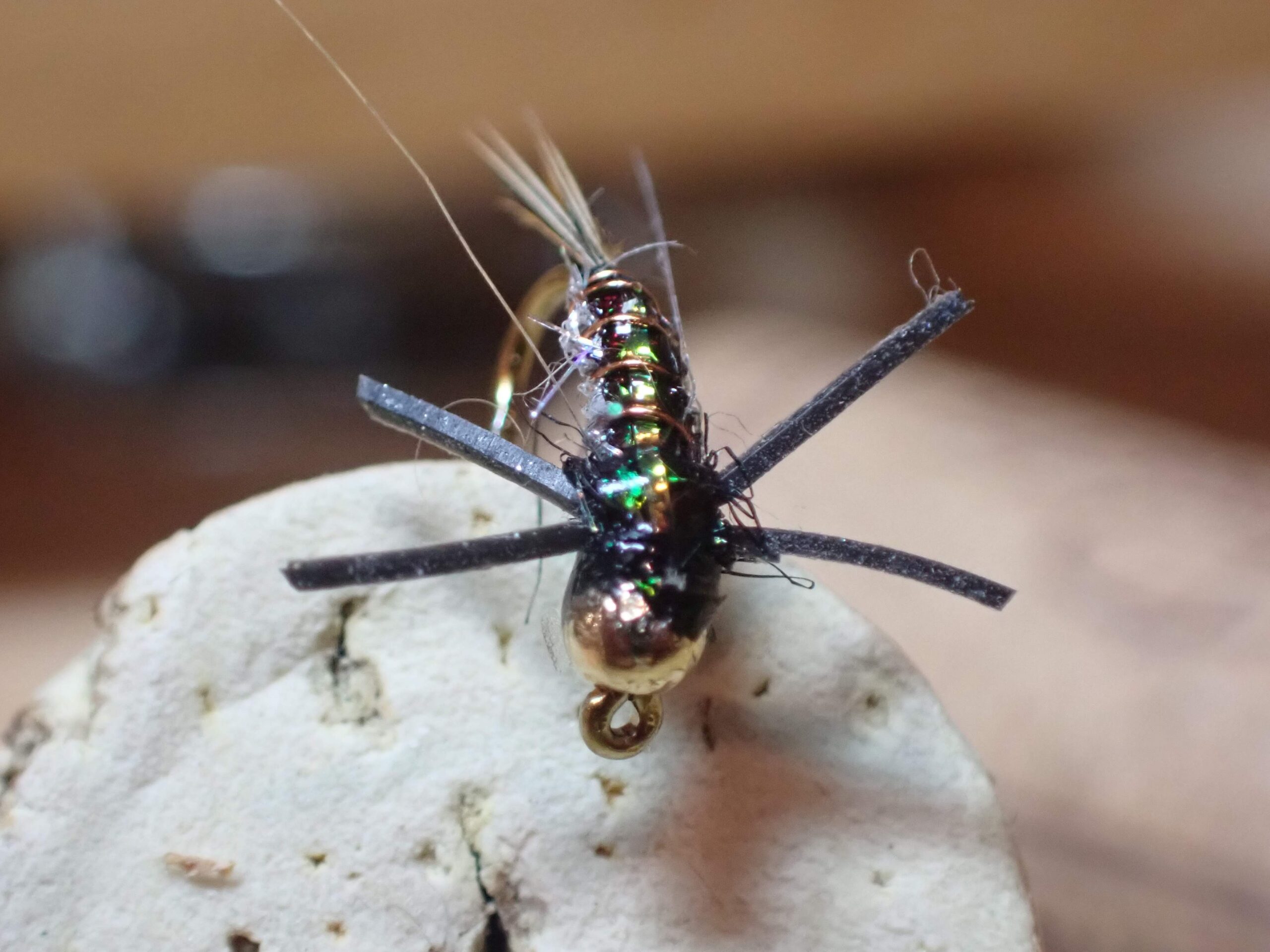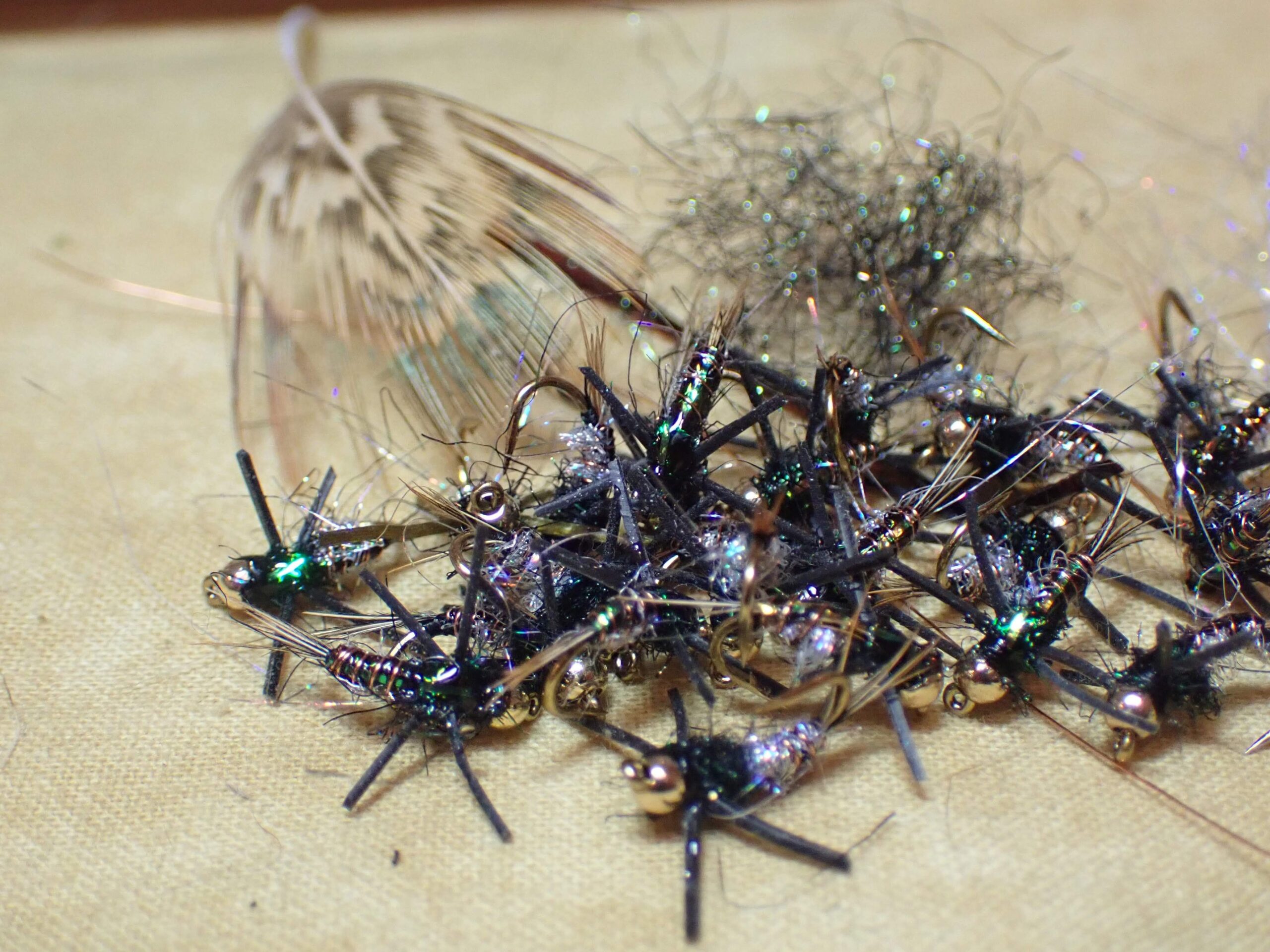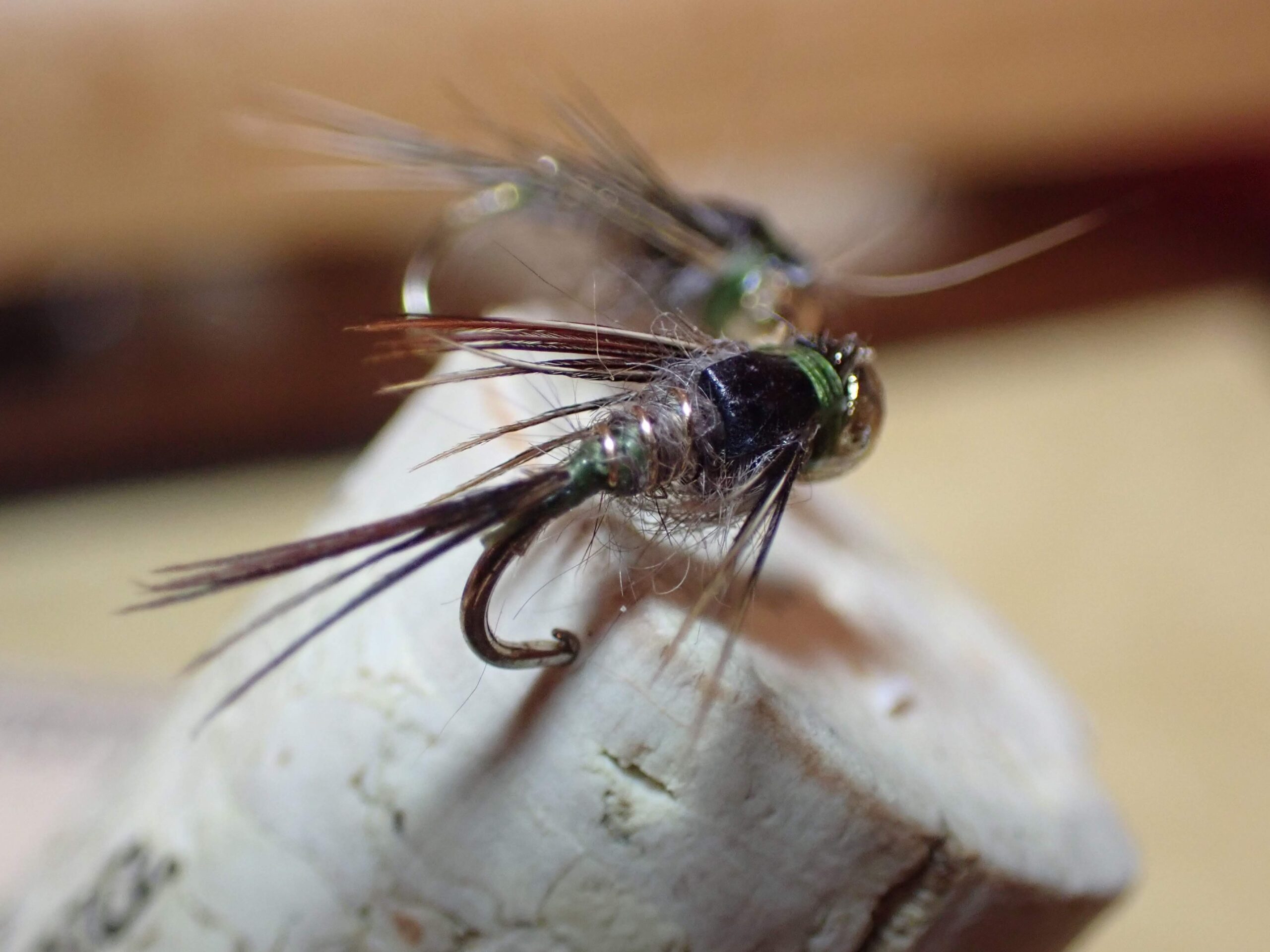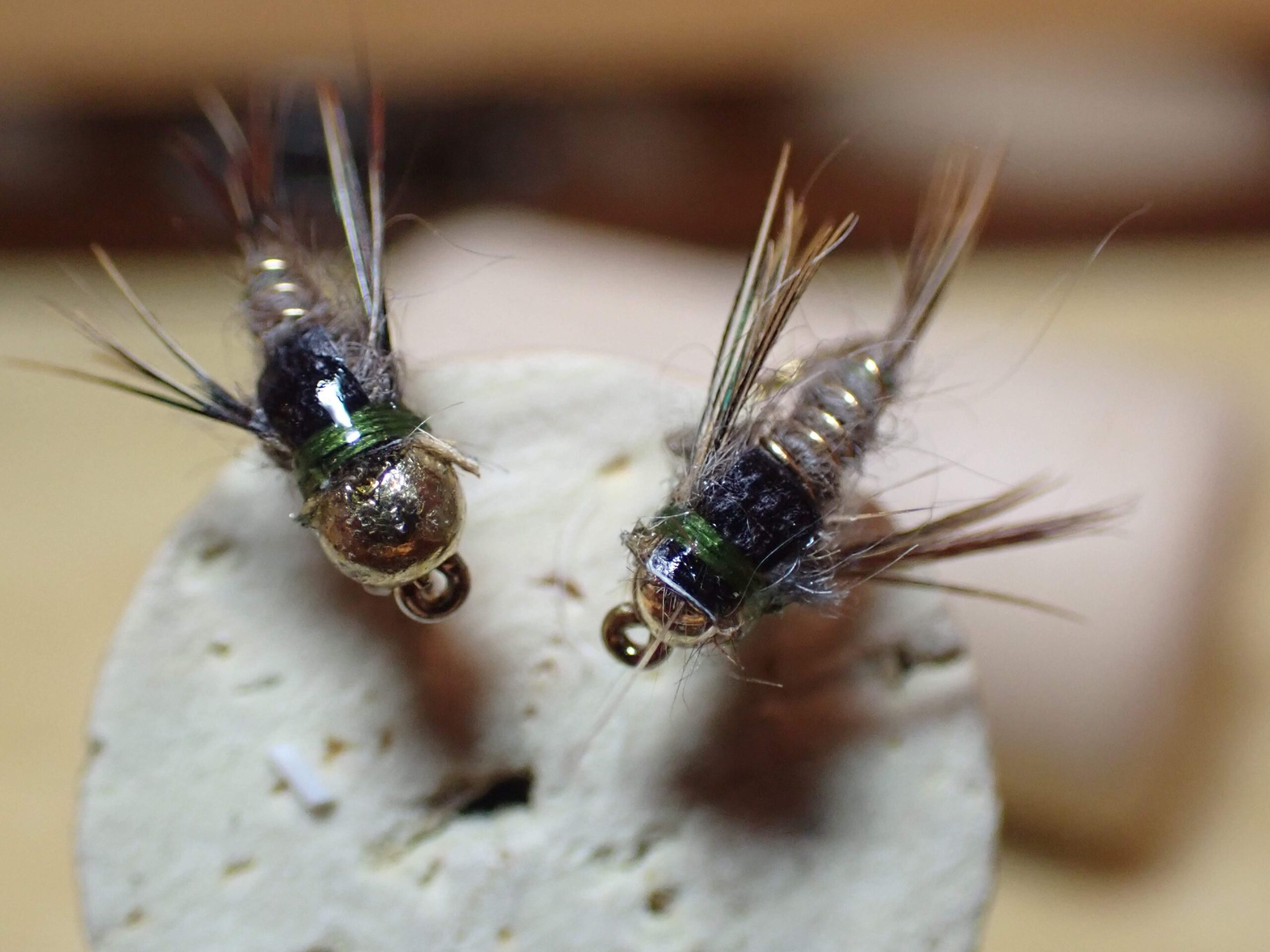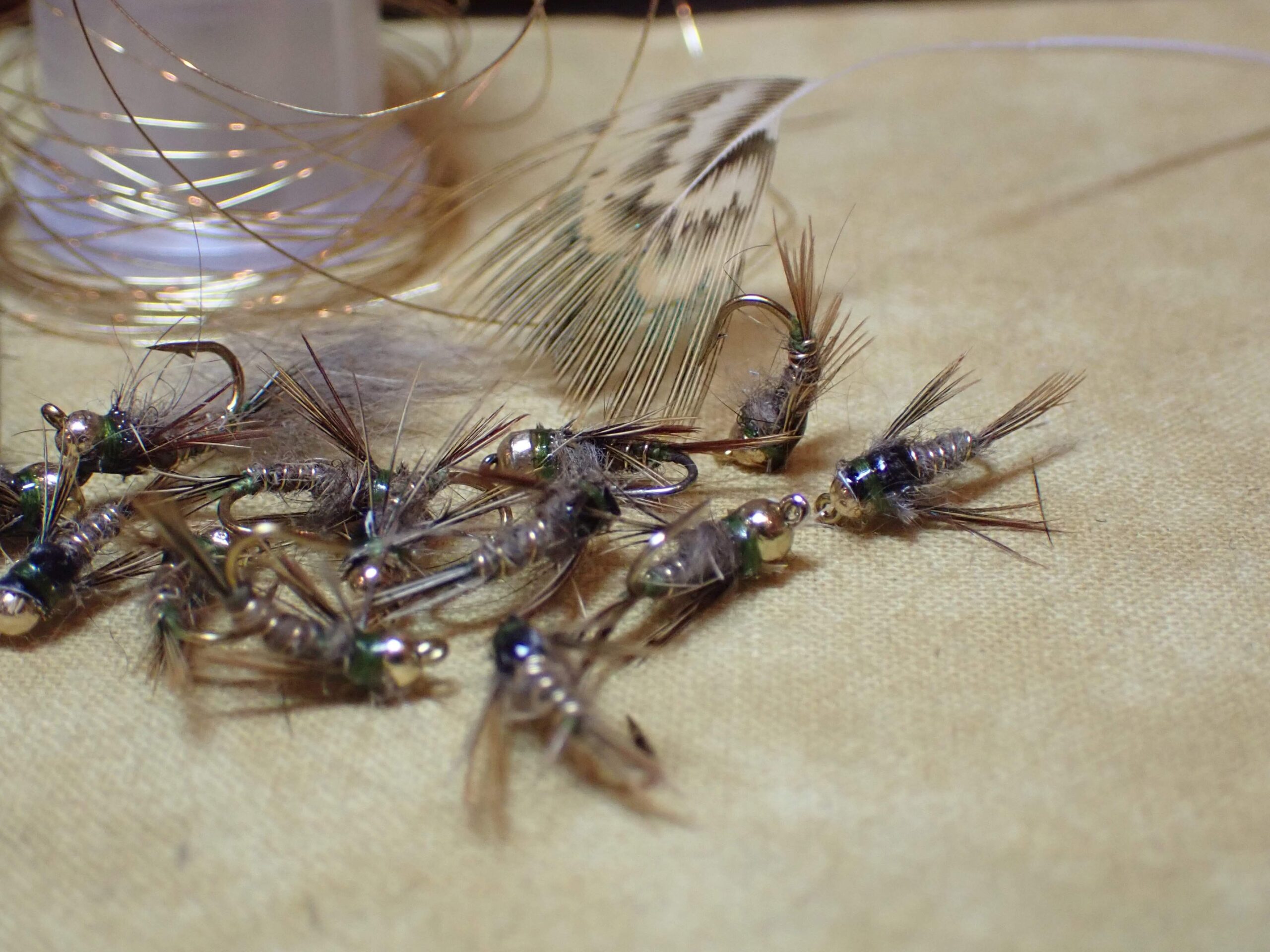Olive Perdigon 11/04/2023 Photo Album
On 10/03/2023 I was fishing on the Eagle River with my friend Dave G. In the first hour I landed two small fish, while Dave G. netted several very nice rainbows, with one in the twenty inch range. I was using a Pat’s rubber legs and RS2, so I swallowed my pride and asked Dave G., if I could borrow one of his flies that was savored by the Eagle River trout. He graciously handed me a size 16 olive perdigon, and the switch proved to be a winner, as I went on to land a bunch of hard fighting rainbows, and all clamped their mouths on the perdigon. This caught my attention.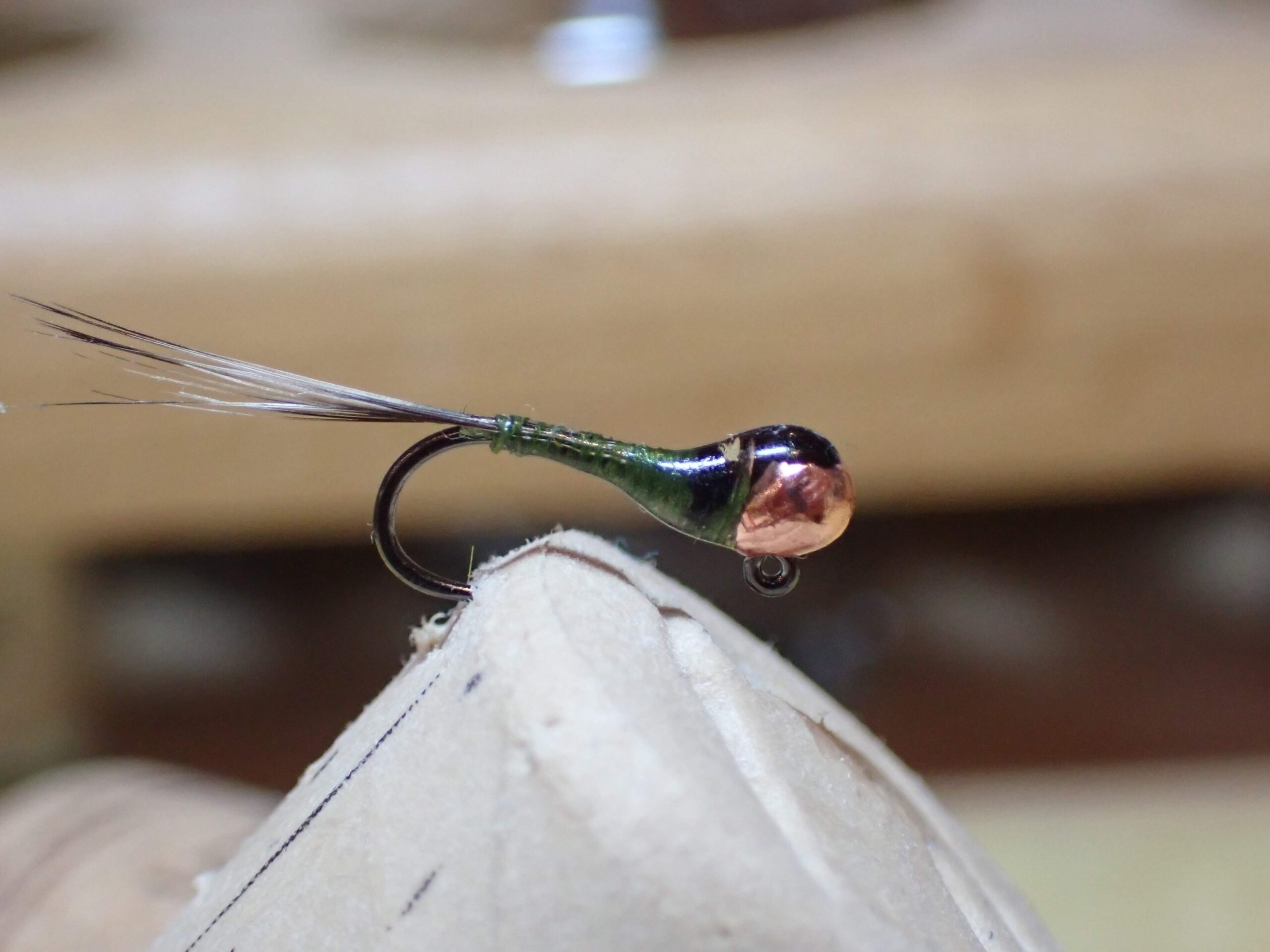
I avoided losing the perdigon, and I took it to Charlie’s Flybox on one of my return drives after playing pickleball. Charlie himself waited on me, and I handed him the fly and asked him to select the matching hooks and beads that were required to replicate the popular perdigon. A few days later I settled in at my fly tying station, and I produced ten new olive perdigons that matched the fly that Dave G. gave me. The fly is actually quite simple to produce, as it consists of a tail of grizzly hackle fibers, an olive thread body, a copper tungsten bead and a jig hook. The hardest aspect of this tie is threading the slotted bead on to the hook and positioning it properly on the angled neck of the jig hook. Also the finishing steps involve applying UV resin, and that can be a somewhat delicate process. I advise using too little resin and not too much. I used a black marker to create the spot on top of the bead and extended it over the upper collar of the fly, and then I applied thick resin to fill in and smooth the gap between the bead and abdomen. Once I dried this with the UV torch, I applied thin UV resin over the entire body of the fly and carefully avoided hitting the tail.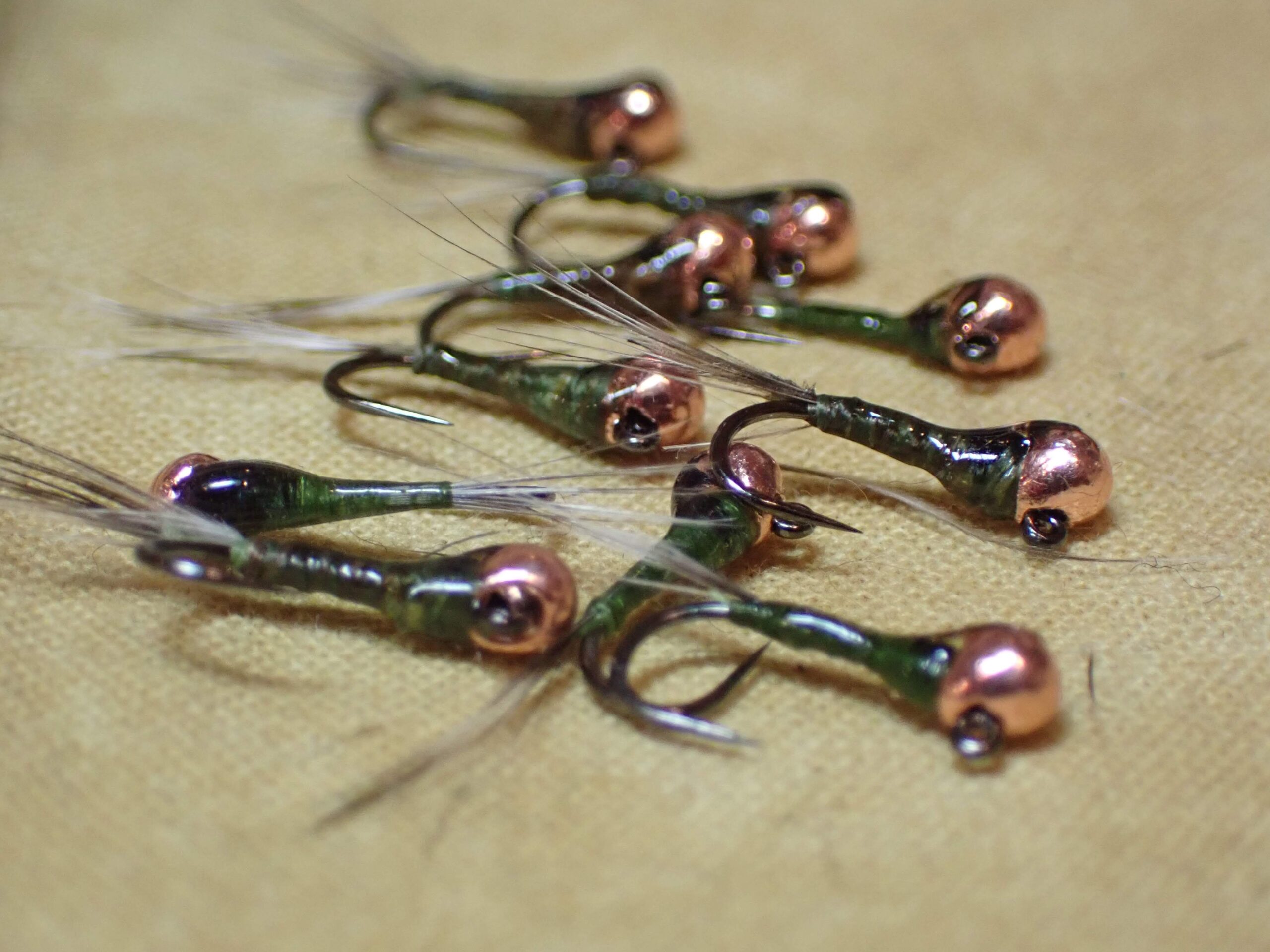
I am amazed at how heavy the tungsten bead is compared to the brass beads I normally use. I suspect much of the success of this fly accrues from the density of the bead and the fast sink rate. Of course, the price of tungsten beads is another drawback, but if the effectiveness matches my experience on 10/03/2023, I will pay the steep price.
Like this:
Like Loading...

